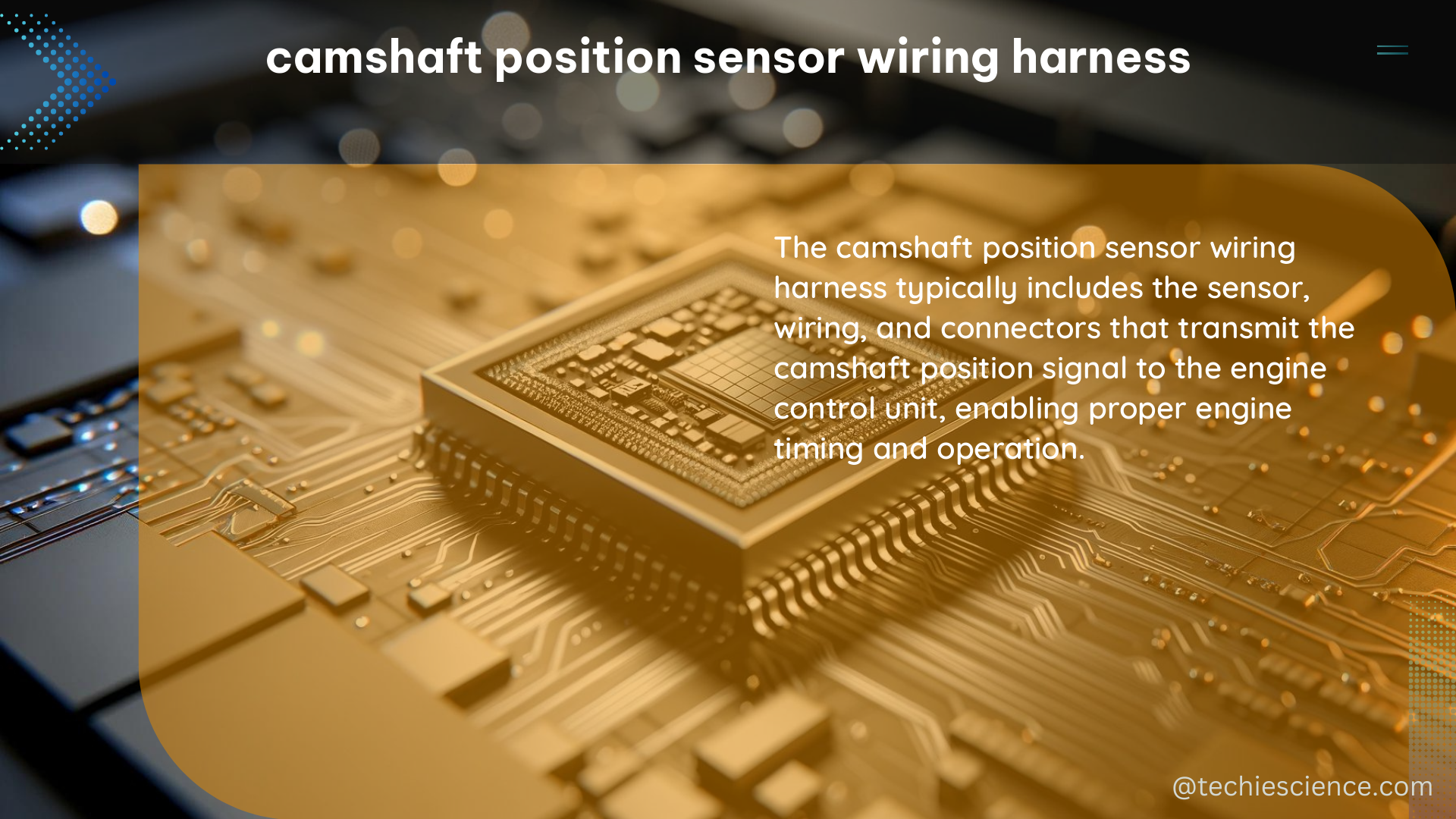The camshaft position sensor (CPS) wiring harness is a critical component in modern internal combustion engines, providing essential data to the engine control module (ECM) for proper engine operation. This comprehensive guide will delve into the technical details and best practices for understanding, diagnosing, and maintaining the CPS wiring harness.
Understanding the CPS Wiring Harness
The CPS wiring harness is responsible for transmitting signals from the CPS to the ECM, which uses this information to precisely control the engine’s ignition timing and fuel injection. The harness typically consists of a few key components:
- Wires: The number of wires in the CPS wiring harness can vary, but it is commonly a 3-wire setup. The wires are typically 18-22 gauge and are color-coded for easy identification.
- Connector: The CPS wiring harness terminates in a connector that plugs directly into the CPS. The connector type can vary, but it is often a weatherproof, sealed design to protect against environmental factors.
- Shielding: In some cases, the CPS wiring harness may have additional shielding or braiding to protect the wires from electromagnetic interference (EMI) or other electrical noise.
Measurable and Quantifiable Data
When it comes to the CPS wiring harness, there are several measurable and quantifiable data points that can be useful for diagnosis and troubleshooting:
| Data Point | Typical Value |
|---|---|
| Number of Wires | 3 |
| Wire Gauge | 18-22 AWG |
| Connector Type | Weatherproof, sealed |
| Voltage Output | 5-12 VDC |
| Resistance | 1-2 kΩ |
It’s important to note that these values can vary depending on the specific vehicle and engine model, so it’s always best to refer to the manufacturer’s specifications when available.
CPS Wiring Harness Integration

The CPS wiring harness is typically a part of the larger engine wiring harness, which can include hundreds of individual wires and connectors. The engine wiring harness is designed to be durable and resistant to heat, vibration, and other environmental factors, but it can still be subject to wear and damage over time.
Technical Specifications
The CPS wiring harness is typically designed to meet or exceed OEM specifications for voltage output, resistance, and other performance characteristics. For example, the CPS wiring harness on a 2012 GMC Equinox is designed to provide a stable 5-volt signal to the CPS, with a resistance of less than 1 ohm.
DIY Repairs and Maintenance
When it comes to DIY repairs for the CPS wiring harness, there are a few key things to keep in mind:
- Wire Identification: It’s important to properly identify the wires in the harness, using a wiring diagram or other reference material. This can help ensure that the harness is properly connected and that any repairs or modifications are done correctly.
- Replacement Parts: When repairing or modifying the CPS wiring harness, it’s important to use high-quality replacement parts and connectors. This can help ensure that the harness is reliable and durable, and that it provides accurate signals to the ECM.
- Diagnosis and Testing: Before attempting any repairs, it’s important to properly test and diagnose any issues with the CPS wiring harness. This can help ensure that the root cause of the problem is identified and addressed, and that any repairs are done correctly the first time.
Conclusion
The camshaft position sensor wiring harness is a critical component in modern engine management systems, providing essential data to the ECM for proper engine operation. By understanding the technical details and best practices for maintaining the CPS wiring harness, you can ensure that your vehicle’s engine is running at its best.
References
- HP Tuners Forum – Wiring for Sensors
- LS1Tech Forum – Cam Sensor Connection Help
- TCCOA Forum – Volt Ohm Reading for Camshaft Position Sensor Connector
- Club Lexus Forum – Camshaft Sensor Wiring Help
- Terrain Forum – Cam Position Sensor Wiring

The lambdageeks.com Core SME Team is a group of experienced subject matter experts from diverse scientific and technical fields including Physics, Chemistry, Technology,Electronics & Electrical Engineering, Automotive, Mechanical Engineering. Our team collaborates to create high-quality, well-researched articles on a wide range of science and technology topics for the lambdageeks.com website.
All Our Senior SME are having more than 7 Years of experience in the respective fields . They are either Working Industry Professionals or assocaited With different Universities. Refer Our Authors Page to get to know About our Core SMEs.